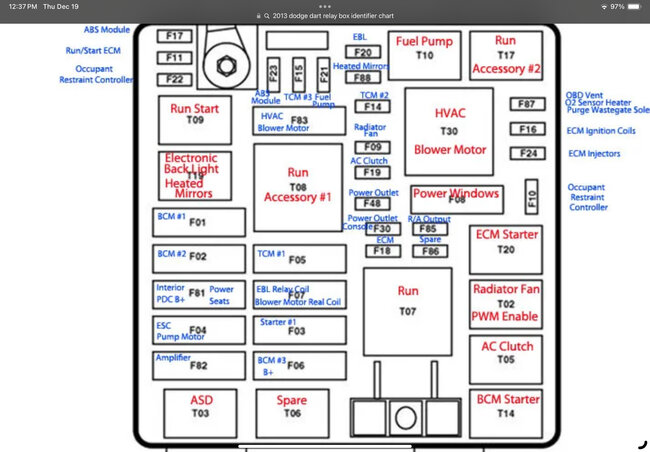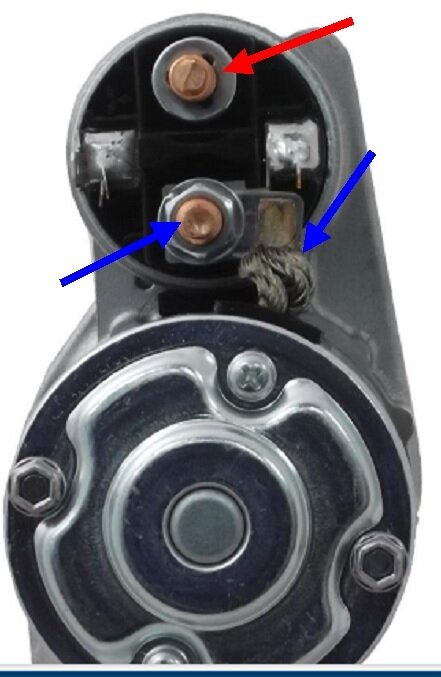Hi guys. I think you're on the right path, but to replace the starter, you gotta get to it. As long as you have to do that, I like to know with more certainty, so I would pursue attaching a clip lead, (small jumper wire), that can be run to a test light, then run the wire under the back of the hood and clip the light under the right wiper arm so you can see it. Watch out for grounded wires as they won't be fused, but typical clip leads are small enough to burn up without much excitement.
To start this test, my preference is to connect the test light to the switched side of the solenoid. That's either blue arrow in the photo. The test light will turn on only during cranking. If it turns on full brightness but the starter motor doesn't run, it has worn brushes, but that would be the less common cause.
By the way, you mentioned you hear a click when the starter is dead. It's important to differentiate the very light click from the starter relay, as opposed to a rather loud, single clunk from the starter. If all you hear is the light relay click, you'll need to look in the solenoid / starter relay circuit. I can post diagrams for you guys if it comes to that. You may not hear the relay click when you're inside the car. The clunk from the starter solenoid can be heard from a long way off.
Assuming the test light does not light up during the cranking attempt, move the jumper wire to the top solenoid terminal, (red arrow). That one is hot all the time so don't let anything touch ground. Expect it to dim a little during cranking, but if it goes out completely, along with the failure to crank, one of the cables has a corroded connection. That was common on older Fords, and it occurred under the insulation where you couldn't easily see it, at the end attached to that terminal. A bad connection at a battery cable clamp isn't likely as you said everything else keeps working.
If you find the 12 volts at the red arrow never goes away, but it fails to show up at the blue arrows during cranking, the contacts are burned inside the solenoid. Older Chrysler models as far back as the late 1980s, and Toyotas, used a neat little Nippendenso starter. Failure of those contacts was extremely common, but they were also rather easy to replace, and cost less than $6.00 for the pair. I'm not aware of such a history with this newer design, and this design, while pretty common, doesn't lend itself to an easy repair. Just replace the starter as MECHTRIX suggested.
These tests work best with the older, inexpensive test light with a small incandescent bulb inside. You'll probably want to disconnect it when it isn't needed so it doesn't run the battery down over a few days, and doesn't become a distraction. The newer test lights with built-in voltmeters, or a digital voltmeter, will work too, but they're a lot harder to read. If you don't have these tools, Harbor Freight Tools has a pack of small jumper wires for less than $4.00, a test light for about the same, and a perfectly fine digital meter for $7.00. Walmart and hardware stores have the test lights and meters too.
Polarity doesn't matter with standard test lights, so you can attach the ground clip to the starter solenoid, then use a jumper wire from the test light's probe, to ground. That way nothing can short out if you accidentally bump the probe to ground.
I'll be around about this time each day in case you guys needs more of my wondrous wisdom.
Image (Click to make bigger)
Thursday, December 19th, 2024 AT 4:11 PM





